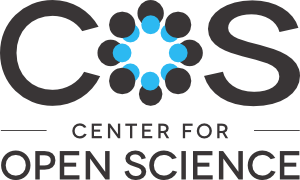Location
Our mission is to increase openness, integrity, and reproducibility of research.
These are core values of scholarship and practicing them is presumed to increase the efficiency of acquiring knowledge.
For COS to achieve our mission, we must drive change in the culture and incentives that drive researchers’ behavior, the infrastructure that supports their research, and the business models that dominate scholarly communication.
This culture change requires simultaneous movement by funders, institutions, researchers, and service providers across national and disciplinary boundaries. Despite this, the vision is achievable because openness, integrity, and reproducibility are shared values, the technological capacity is available, and alternative sustainable business models exist.
COS's philosophy and motivation is summarized in its strategic plan and in scholarly articles outlining a vision of scientific utopia for research communication and research practices.
Because of our generous funders and outstanding partners, we are able to produce entirely free and open-source products and services. Use the header above to explore the team, services, and communities that make COS possible and productive.
Members:
Resources
Displaying 431 - 435 of 447Property Rights and Sustainable Land use on a Salinity-affected Catchment
Dryland salinisation is a non-point and intertemporal stock externality which requires a dynamic modelling approach to study its long-term management. In this paper a simple dynamic optimisation model is developed and applied to find land-use strategies that maximise benefits from the viewpoints of both individual farmers and the catchment as a whole. Privately optimal land-use may result in an ever-increasing trend in salinity and a declining trend in productivity for the discharge zone of the catchment.
The effects of land sales restrictions: evidence from south India
The effects of land sales restrictions on credit use, land investment and cultivation decisions are investigated using data from two villages in south India. Sales restrictions are found to have little effect on credit supply and demand or demand for land improvements. Some household characteristics are found to affect investment demand on plots subject to sales restrictions in one village, suggesting that the 'transactions effect' of such restrictions may be inhibiting allocative efficiency.
RURAL POPULATION GROWTH, AGRICULTURAL CHANGE AND NATURAL RESOURCE MANAGEMENT IN DEVELOPING COUNTRIES: A REVIEW OF HYPOTHESES AND SOME EVIDENCE FROM HONDURAS
This paper reviews hypotheses about the impacts of rural population growth on agriculture and natural resource management in developing countries and the implications for productivity, poverty, and natural resource conditions. Impacts on household and collective decisions are considered, and it is argued that population growth is more likely to have negative impacts when there is no collective responses than when population growth induces infrastructure development, collective action, institutional or organizational development.
Determinants of land use change: evidence from a community study in Honduras
This study investigates the micro-determinants of land use change using community, household and plot histories, an ethnographic method that constructs panel data from systematic oral recalls. A 20-year historical timeline (1975-1995) is constructed for the village of La Lima in central Honduras, based on a random sample of 97 plots. Changes in land use are examined using transition analysis and multinomial logit analysis.
Pathways of development in the hillsides of Honduras
Based on a survey of 48 communities in central Honduras, this paper identifies the major pathways of development that have been occurring in central Honduras since the mid-1970s, their causes and implications for agricultural productivity, natural resource sustainability, and poverty.


